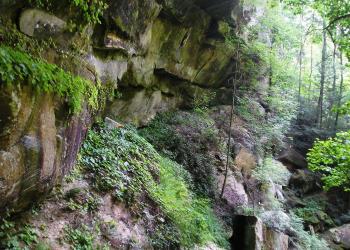Wilderness
The Wilderness Act of 1964 defines wilderness as “an area where the earth and its community of life are untrammeled by man, where man himself is a visitor who does not remain.” The Act’s purpose is to preserve and protect the natural ecosystems and wild areas and also provide opportunities for solitude, retrospection and primitive recreation.
Today, there are 765 wilderness areas covering more than 109 million acres that are part of the National Wilderness Preservation System, which is managed by the Forest Service and three other federal land management. We manage two federally designated wildernesses on the Daniel Boone National Forest: Beaver Creek Wilderness and Clifty Wilderness.
Preserving Wilderness Character
While wilderness areas are meant to be used and enjoyed, certain recreation activities can negatively impact the natural, untamed, undeveloped and primitive aspects that make wilderness worthy of its name. By following all wilderness rules and regulations, you protect wilderness resources and future opportunities for high-quality wilderness experiences.
Wilderness Areas
Beaver Creek Wilderness

Beaver Creek Wilderness is a secluded hardwood forest located within the Beaver Creek Wildlife Management Area. The wilderness is almost totally enclosed by towering sandstone cliffs. Below these high walls you can find natural arches formed by the elements, and rock shelters used by Native Americans and early settlers.
Clifty Wilderness

Clifty Wilderness is a rugged area characterized by miles of high cliffs, steep valleys, numerous sandstone arches, rock shelters and boulder-strewn creeks. This wilderness is located within the scenic Red River Gorge Geological Area, where cliffs tower 200 feet above the mature hemlocks, hardwoods and rhododendron thickets.


